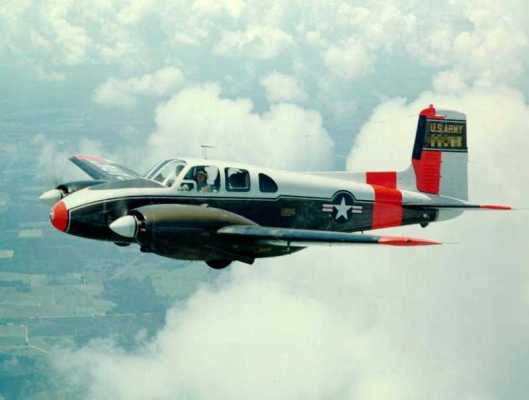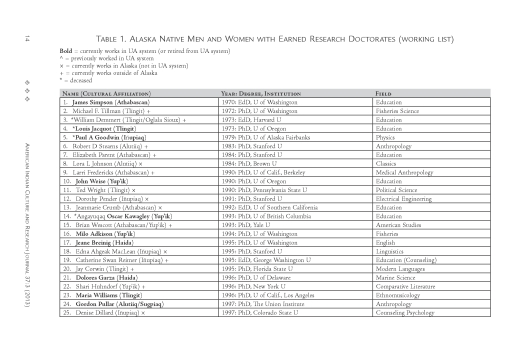Updated 2021-02-19 Fifty years later, can you help support naming the JBER Bryant Field Alaska Army National Guard Maintenance Hangar 6 to be the SFC Herbert Alex Alaska Army National Guard Maintenance Hangar? SFC Herbert Alex, a Dena’ina Athabascan, was the grandson of the last Traditional Chief of the Native Village of Eklutna. His and two other lives were lost on February 19, 1971 while on a flight from Whitehorse, YT, to Fort Richardson, AK
Please help by signing the Change.org petition,
https://www.change.org/p/state-of-alaska-adjutant-general-torrance-saxe-memorial-request-for-alaska-army-national-guardsman
Updated 2011-11-21, The Internet Archive has a copy of one of the oral histories about this event, http://www.archive.org/details/JohnSpaldingOn1971MtSanfordNationalGuardCrashRecorded2011
Forty Fifty years ago on February 19, 1971, an Alaska Army National Guard aircraft crashed at the 14,880 foot level of Mt. Sanford, 200 miles east of Anchorage in the Wrangell Mountains. The aircraft was an Army U8-D and was to be the first multi-engine aircraft for the Alaska Army Guard. It was on a ferry flight to Ft Richardson, Alaska from Fresno, California when it crashed. The crew was MAJ [Major] Steve W. Henault, US Army; LTC [Lieutenant Colonel] LTC William Caldwell (Bill), AKARNG; and SFC [Sergeant First Class] Herbert Alex (Herb), AKARNG. All died in the crash. One rescuer also succumbed in the attempt.
Very little was published in coeval accounts (see https://www.flickr.com/photos/190067453@N05/albums/72157715880516183). Many current National Guard members are unaware of these events in Alaska aviation history. The Alaska Army National Guard was the first in the nation to begin an aviation component. The plane was coming from the Army. It had been stationed in Panama and re-fitted and overhauled in California.
U-8D plane, similar to that ferried to AKARNG.
En route to AK the U8-D [See http://en.wikipedia.org/wiki/Beechcraft_L-23_Seminole] developed engine problems, declared an emergency, and landed in Whitehorse, Yukon Territory. The Army in Fresno was still responsible for repairs to return the U8-D to airworthy condition. However, on the repair flight to Whitehorse with the U-8 engine, the DC-3 itself lost an engine and landed at Ft Lewis, Washington.
Finally, when word was received at Ft Richardson that the U8-D was nearing airworthiness, Henault, Caldwell, and Alex flew to Whitehorse to continue the ferry mission. After a few delays, all was OK and they launched February 19 from Whitehorse to Kulis ANGB [Air National Guard Base], Anchorage.
MAJ Henault [http://www.smokejumpers.com/obituaries/item.php?obituaries_id=545 ] was the Pilot in Command/Instructor Pilot conducting a multi-engine plane transition as well as qualifying LTC Caldwell in the U-8. Caldwell was only a single engine qualified pilot at that time. Henault was not in the Guard but Active Duty US ARMY stationed at Ft Richardson. SFC Alex was the first aviation mechanic for AKARNG.
The evening of February 19 was the annual Adjutant General’s Ball at the Elmendorf AFB Officers Club. A radio call came in from LTC Caldwell asking that his wife be contacted and advised that they would be running a little late. Could she please lay out his dress blues for attendance at the annual AG’s Ball.
This was the last known contact with the U8-D, approximately five minutes prior to impact.
A search was launched on Saturday. Ordinarily the flight would have been through Northway. A check of all local airports along the route had been conducted with negative results. On Sunday, an Air Force C-130 located the wreckage on Mt Sanford.
Rescue and recovery attempts were made but due to continuous poor weather, the mission was greatly delayed. Weather in Anchorage dropped to double digits below zero that following week of Fur Rendezvous. Ray Genet, the Talkeetna mountain climber, Mt McKinley’s first guide, and Rex Post, a Pan American World Airways captain on leave, also a mountaineer, were dropped off from an Army helicopter at the 15,500 foot level in an attempt to reach the wreckage.
Genet had been on the mountain about a week before the weather broke, allowing him access to the aircraft. He had holed up in an emergency snow cave within about 400 yards of the aircraft. Post got altitude sickness and died on the mountain. [http://www.smokejumpers.com/obituaries/item.php?obituaries_id=39]. Genet had frostbitten hands from the recovery effort. He died in 1979 while descending Mount Everest. [http://wikimedia.org/wikipedia/en/wiki/Ray_Genet]
Later, the US Army, the AKARNG, and the families decided that if all the remains could not be recovered, they would all rest in place on the mountain. They remain so today. “Whiskey Charley” is in the left seat, Herb is in the seat behind the P/CP [pilot/co-pilot] seats and Steve lies about 100 feet below the severed right wing.
A real tragedy and great loss to the AKARNG, Caldwell and Alex were very dedicated soldiers. The Nome, AK Armory was later dedicated to LTC Caldwell for his time and service as the Commander of the 1st Scout BN [Scout Battalion].
Alex was the grandson and son of Eklutna traditional leaders and his children also served in the AKARNG. In the mid-1980s, there was an effort to dedicate the AKARNG Aviation Hanger at Ft Richardson (Bryant Airfield) to SFC Alex, but nothing came of it.
The 20 ft air traffic control tower was built in 1961. It is Building 4800. The State Historic Preservation Officer lists the tower as site AK-ANC-01095
Today, the 50 year-old air traffic control tower at the airfield is about to be modified and its distinctive pattern (the last such tower in Alaska) obliterated. Alaska National Guard heritage, which is also Alaska heritage, is little known outside of the living participants’ memory. And, of course, so much of our National Guard history is oral, not written, such as the Alaska Territorial Guard of 70 years ago. We’ve never had trained scholars to gather and analyze the oral histories. The documents and structures of this heritage are not kept, much less preserved for current and future Alaskans and NG to learn from.
It would be nice if the 40th anniversary of this loss could be remembered by the state and would stimulate further interest and professional research.
2021 February 19–It’s been 50 years. Please help by signing the Change.org petition,
https://www.change.org/p/state-of-alaska-adjutant-general-torrance-saxe-memorial-request-for-alaska-army-national-guardsman
~~~~~~~~~~~~~~~~~~~~~~~~~~~~~~~~~~~~~~~~~~~~~~~~~~~~~~
My thanks to David J Mock, John Spalding, and other Alaska veterans and to the family of Herbert Alex (sister Julia Cooper and daughter Eleanor Wilde, also a NG veteran) for their first-hand accounts which went into this post.
This was originally posted at https://www.facebook.com/pages/Alaska-National-Guard-Heritage/121826611217021
additional information–
Mrs Elizabeth L.J. Alex http://www.alaskastar.com/stories/011405/obi_20050114024.shtml
ARMY AIR CREWS: Fixed Wing Aviation Crewmembers Line of Duty Deaths http://www.armyaircrews.com/fixed.html
A University Engaged With its Community The Search for Dena’ina … http://www.uaa.alaska.edu/alumni/upload/Spring07.pdf
The Complete 1957 Gustavus/Juneau Plane Crash Story by Rita Wilson, http://www.gustavushistory.org/articles/view.aspx?id=10000
2011–Just this past week, the DMVA issued a call for information about Bryant Army Air Field, http://www.facebook.com/permalink.php?story_fbid=244246672302390&id=121826611217021




